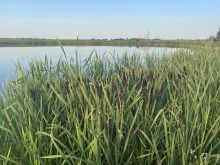The Alberta Barley Commission and Canadian Wheat Board are working with the federal government and Rahr Malting Co. on a research project aimed at developing new fusarium-resistant barley varieties.
The research, to be carried out at Agriculture Canada’s research centre in Lacombe, Alta., will evaluate the impact of agronomic management practices on malting quality.
The goal is to come up with practical advice for farmers on how to optimize yield and quality for malting barley.
The barley commission and CWB will each contribute $130,000 over the next four years for the research. The government of Canada will put in $300,000 and Rahr Malting $40,000.
Read Also

Europe holds promise for Canadian lentils
Pulse Canada is trying to help boost lentil consumption in Europe, which is already the fourth largest market.
Rahr is a Minnesota based malting company with facilities in Shakopee, Minn., and Alix, Alta.
While fusarium has been a big problem in Manitoba and parts of Saskatchewan, Alberta has been relatively free of the destructive disease, and the barley commission wants to keep it that way.
“Alberta has joined the fight against fusarium to help find ways to arrest this devastating disease before it can spread to our fields,” said commission general manager Mike Leslie.
Earl Geddes, the CWB’s vice-president of product development, said the research could help increase total supplies of selectable barley in Western Canada.
“This will be a great asset to marketing efforts, with the ultimate goal of putting more money into the pockets of prairie barley producers.”
The board and barley commission are also funding research into fusarium-resistant barley at Agriculture Canada’s Brandon research centre, along with a wide range of other government and university research funds.














